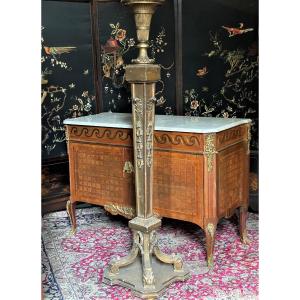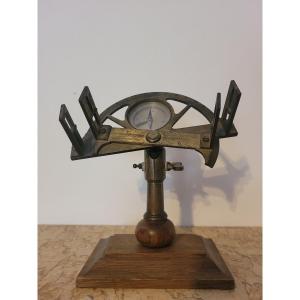At the time, it was the largest ship in the British Royal Navy Today, HMS Victory is on display at the Royal Naval Museum in Portsmouth.
A faithful reproduction, this large model (over a metre) is made entirely of wood, canvas for the sewn sails and metal for the chains and anchors.
20th century
Very good condition
90 cm high, 110 cm long, 20 cm wide
HISTORY OF THE BRITISH SHIP HMS VICTORY
"The British line ship HMS Victory is best known for its participation in the Battle of Trafalgar in 1805, as Admiral Horatio Nelson's flagship against the Franco-Spanish Armada. At the time, it was the largest ship in the British Royal Navy. Today, it is dry docked in the port of Portsmouth (Hampshire), in the south of England, and serves as a museum piece. The British ship HMS Victory remains the flagship of the Second Sea Lord. It is all the more important because it is the only ship of the line to have survived to this day in its original condition. HMS Victory was launched in 1765. The remaining work, such as the rigging, sails and armament, among other things, was gradually completed until the British ship of the line was ready for active service in 1778. Two years after being assigned to command HMS Victory, Nelson took part in the Battle of Trafalgar, the most decisive of the Napoleonic Wars, as it was the battle that put an end to the French and Spanish navies, thus giving the United Kingdom a maritime supremacy that would last until the Second World War. Nelson did not, however, have the good fortune to learn of his victory, as he was killed during the battle in a close-quarters engagement with the Redoutable, a large 74-gun French ship. Nelson was shot by a sniper from the gunwales of the Redoutable.


















































 Le Magazine de PROANTIC
Le Magazine de PROANTIC TRÉSORS Magazine
TRÉSORS Magazine Rivista Artiquariato
Rivista Artiquariato